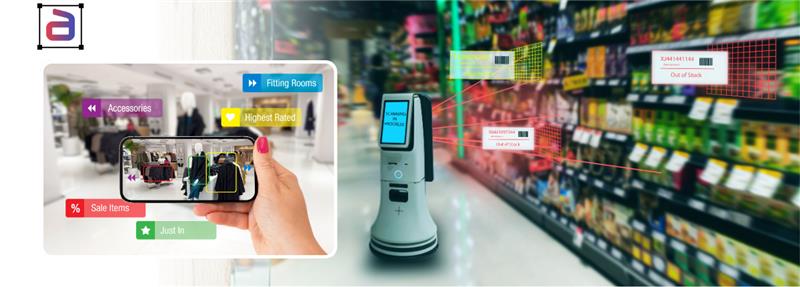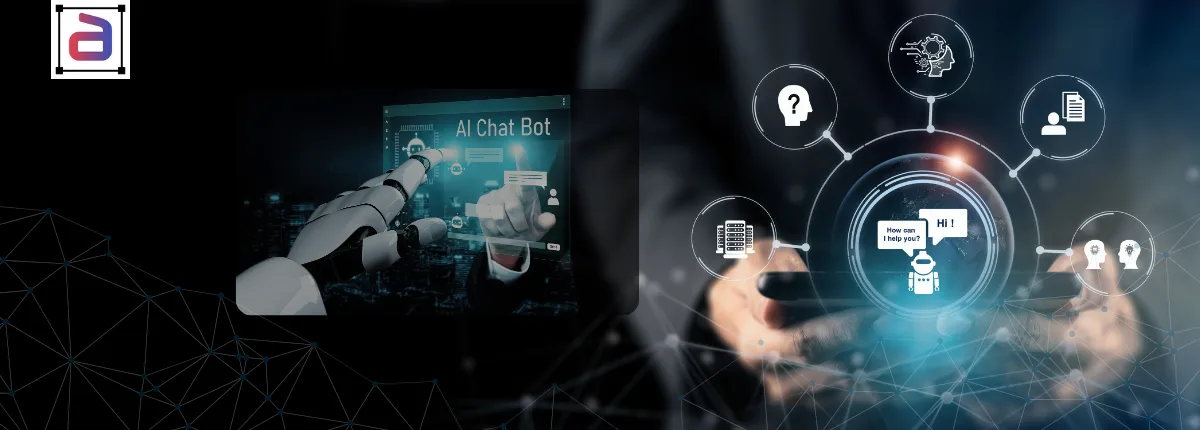Humans don’t just rely on one sense to understand the world—we combine sight, sound, touch, and context to make decisions. Artificial intelligence is beginning to do the same through multimodal data annotation, a process that allows AI systems to learn from and interpret multiple data types at once. This advancement is pushing AI closer to human-like intelligence, where it can understand not just words, but tone, facial expressions, and visual cues all together.
What is Multimodal Data Annotation?
Data annotation is the labeling of datasets that include more than one type of input, such as text, images, video, and audio. Multimodal data annotation involves labeling information from multiple sources—such as text, images, audio, and video—to create richer AI training datasets. By integrating these diverse inputs, models learn to interpret complex, real-world scenarios more effectively. Moreover, this holistic approach enhances context understanding, improving accuracy in applications like autonomous systems, healthcare, and virtual assistants. Instead of training an AI model on isolated data streams, multimodal annotation teaches it to integrate and interpret signals holistically. For example:
- Annotating a video of a customer complaint with text (transcribed speech), audio (tone of voice), and visual (facial expressions).
- Training an AI to analyze a sports game by labeling player movement in video, commentary in audio, and fan sentiment from social media text.
This enables AI systems to recognize patterns that would be invisible in a single data type.
Why It Matters for Human-Like AI
Human communication is rich and layered. We nod when we agree, raise our voice when upset, and combine gestures with speech to express meaning. For AI to interact naturally with people, it must understand these layers. Multimodal annotation provides the foundation by teaching models how to connect signals across modalities.
- Emotion Recognition: Combining text sentiment with voice tone and facial expressions creates highly accurate emotion-detection models.
- Contextual Understanding: A phrase like “I’m fine” could be annotated as positive in text, but paired with a sigh in audio or a frown in video, it signals negative sentiment.
- Better Decision-Making: By integrating signals, AI can reduce errors and respond more appropriately in dynamic, human environments.
“The future of AI isn’t just about processing data—it’s about understanding humans on a deeper level.” — AI Ethics Researcher
Key Techniques in Multimodal Annotation
Annotating multimodal data involves complex workflows and specialized techniques. Unlike single-modality annotation, this process requires synchronizing inputs across time and context, ensuring that AI systems can connect meaning from one channel to another:
- Text Annotation: Includes polarity (positive, negative, neutral), aspect-based sentiment tied to product or service features, named entity recognition (identifying people, places, brands), and intent classification for understanding user goals.
- Audio Annotation: Goes beyond transcription to include tagging tone of voice, detecting emotional states such as joy, anger, or frustration, and labeling acoustic events like applause, background noise, or alarms that influence interpretation.
- Image Annotation: Uses bounding boxes and semantic segmentation for object detection, facial landmark tagging for expression recognition, and instance segmentation to differentiate between multiple objects of the same class.
- Video Annotation: Requires temporal segmentation to mark actions over time, gesture recognition to capture human body language, and scene labeling to give context (e.g., office vs. outdoor event).
- Cross-Modal Linking: The most critical technique, this connects annotations across modalities—for example, linking an angry tone in audio to a negative sentiment label in text, or correlating a smile in video with positive words in transcripts. This ensures AI models don’t just interpret signals in isolation but understand them holistically.
These combined techniques provide AI with richer, more context-aware datasets, helping models replicate the multi-sensory way humans perceive and respond to the world.
Applications Across Industries
Multimodal annotation is not just a technical breakthrough; it’s reshaping industries by allowing AI systems to understand people and environments with greater depth:
- Customer Experience: Chatbots and virtual assistants that can process voice tone, text intent, and facial recognition simultaneously respond more empathetically. For example, a bot that detects frustration in tone while analyzing words like “disappointed” can escalate a case to a human agent immediately, improving resolution rates.
- Healthcare: Combining annotations across medical scans, electronic health records, and patient voice notes leads to more accurate diagnostics. A multimodal system could connect a radiology image showing a lesion with a patient’s verbal symptoms, improving the precision of decision support tools.
- Retail: Annotated customer journeys draw on video surveillance, point-of-sale data, and review feedback to optimize shopping experiences. Retailers use this to refine store layouts, improve product placement, and deliver personalized promotions in real time.
- Autonomous Vehicles: Safety depends on the fusion of LiDAR, video, radar, and even audio data. Annotating these multimodal inputs enables cars to distinguish between a pedestrian speaking near a crosswalk and a background noise, making navigation safer.
- Entertainment: Annotating viewer reactions—including facial expressions during shows, audio commentary, and engagement on social platforms—helps streaming services refine recommendation algorithms, boosting user satisfaction and retention.
Case Example: Annotera partnered with a healthcare AI firm to annotate patient consultations across text, audio, and video. This multimodal dataset improved diagnostic support accuracy by 24%, enabling more precise and empathetic virtual care.
Challenges in Multimodal Annotation
Multimodal data annotation presents challenges such as synchronizing diverse data types, maintaining consistency, and ensuring contextual alignment across modalities. While automation can assist with volume, complex correlations still require human expertise. Moreover, managing quality at scale demands robust workflows and validation methods to ensure reliable, high-performance AI model training. The promise of multimodal annotation comes with hurdles that require careful planning:
- Data Volume: Each modality adds another layer of data. A single patient consultation can include gigabytes of video, audio, and text, demanding robust infrastructure for storage and processing.
- Complexity: Synchronizing time-based modalities, such as aligning spoken words with corresponding gestures or expressions in video, is technically demanding and resource-intensive.
- Cultural Context: Tone, gestures, and expressions may carry different meanings in different regions. Annotators need cultural training to avoid introducing bias or misinterpretation.
- Consistency: With so many annotation layers, ensuring standards remain uniform is challenging. Without strict QA protocols, errors multiply and reduce model reliability.
- Privacy Concerns: Multimodal data often contains highly sensitive information—such as patient consultations or customer service calls—making compliance with GDPR, HIPAA, and similar frameworks non-negotiable.
Human-in-the-Loop Advantage
In multimodal data annotation, the Human-in-the-Loop advantage lies in combining human insight with AI efficiency. While automation handles repetitive tasks, human reviewers ensure contextual accuracy across text, image, audio, and video data. Moreover, this collaboration enhances annotation quality, reduces bias, and delivers reliable datasets for complex, real-world AI applications. Automation accelerates annotation, but the human touch remains vital:
- Detecting Sarcasm/Irony: Machines may flag “That’s just perfect” as positive, but human annotators catch the sarcastic intent.
- Cultural Awareness: Humans bring awareness of local idioms, gestures, and tones that AI can miss, ensuring fairness in models.
- Feedback Loops: Annotators continuously validate AI outputs, feeding corrections back into the system so the model improves with each cycle.
The Role of BPO in Multimodal Annotation
Building multimodal annotation pipelines internally is a resource-heavy endeavor. BPOs play a crucial role in multimodal data annotation by managing large-scale labeling projects with efficiency and accuracy. Through trained annotators and standardized workflows, they handle complex datasets across text, image, audio, and video. Moreover, their operational scalability ensures consistent, high-quality outputs that accelerate AI development across diverse industries. BPO partners enable organizations to move faster and smarter:
- Scalability: Large, distributed teams handle multimodal projects that span millions of data points.
- Expertise: Annotators skilled in linking signals across modalities, such as matching a stressed tone in audio to a negative sentiment label in text.
- Compliance: Secure workflows aligned with HIPAA, GDPR, and ISO standards protect sensitive healthcare and customer data.
- Cost Efficiency: Outsourcing helps organizations reduce overhead while accelerating delivery of annotated datasets.
Annotera’s Expertise in Multimodal Data Annotation
Annotera’s expertise in multimodal data annotation combines precision, scalability, and advanced technology to deliver high-quality labeled datasets. By synchronizing text, image, audio, and video inputs, Annotera ensures AI models gain comprehensive context understanding. Moreover, its human-in-the-loop approach guarantees accuracy and consistency, driving smarter, real-world-ready AI solutions across industries. At Annotera, we deliver multimodal data annotation that brings AI closer to human-like intelligence:
- Comprehensive Services: Covering text, audio, video, LiDAR, and sensor data.
- Cross-Modal Expertise: Linking modalities for richer, more actionable insights.
- Bias-Aware Workflows: Building datasets that reflect diverse voices, expressions, and cultures.
- Human-in-the-Loop QA: Multi-layered validation ensures accuracy and reliability even in complex projects.
Case Example: Annotera supported a retail AI company with multimodal annotation of in-store video, customer conversations, and purchase history. The project resulted in a 30% improvement in personalized recommendations, directly boosting sales, engagement, and customer loyalty.
Executive Takeaway
Multimodal annotation is the bridge between today’s task-specific AI and tomorrow’s human-like intelligence. By teaching machines to integrate signals the way people do, businesses can create AI that is not only smarter but also more empathetic, context-aware, and trustworthy.
“AI that sees, listens, and understands together is the closest we’ve come to human-like intelligence.” — Machine Learning Scientist
Contact Annotera for Multimodal Annotation
The future of AI is multimodal. From healthcare to retail, companies that embrace multimodal annotation will lead the next wave of innovation.
Ready to build more human-like AI with multimodal annotation? Partner with Annotera today to create datasets that power the next generation of intelligent, empathetic systems.


